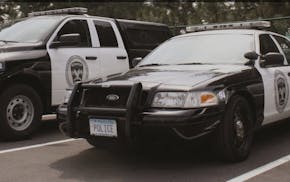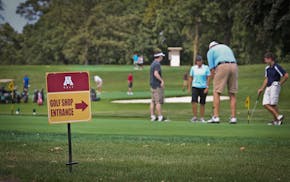The calls came in quick succession over the course of two weeks: A man in St. Louis Park fell and dialed 911 for help getting up, again and again.
So Assistant Fire Chief Beaux Beauvais, who is also a paramedic, tried something different. He went to the man's house, reviewed his medications and found they were likely mixing poorly and causing his dizziness.
"When our firefighters go out on 911 calls every day, they sometimes identify patients that might need extra help beyond the confines of that 911 call," Beauvais said.
That's why St. Louis Park will soon have a new alternative response medic dedicated to handling those types of calls, joining a growing number of cities trying to blend social work with medicine to reduce emergencies.
Fire chiefs across the Twin Cities metro area say they've also seen a spike in calls, some driven by drug overdoses or mental health concerns. In other places, people are aging and falling more frequently. Many fire chiefs say more patients seem to be relying on 911 for nonemergency issues that might be best handled in a doctor's office.
"We already had an embedded social worker within the police department," said Richfield Fire Chief Mike Dobesh, whose department is testing out a similar program. "So there was this request to see if we could do something different, something bigger."
The number of calls coming into the St. Louis Park fire department has risen in recent years, and medical requests now account for about 70% of them, interim Fire Chief Mike Scott said. He added that it's "kind of a misnomer" now to call it just a fire department.
With the new alternative response program, Beauvais said, "The hope is that we can give the patient the best chance of a good outcome."
Calls mount in metro area
Burnsville began experimenting with a Community Risk Reduction team a couple of years ago. Firefighter-paramedics came in to work overtime, partnering with police and social workers, to try to focus on reducing the overdoses and falls that accounted for most of their calls. The program is still in its pilot phrase.
"What it will look like officially in the future, I don't know for sure," said Burnsville Assistant Fire Chief Neal Dwyer, adding that officials are trying to use call data to ensure they're finding gaps in services and fixing them.
Richfield and Edina launched a new team about a year ago that pairs a paramedic with a Hennepin County social worker. Together, they try to focus on helping the people who call 911 most frequently.
They can take the patient to a hospital in an emergency. Other times, they leave behind a card listing programs that might be able to help the person, a resource some patients turn to months later.
"With the increased call volume, no matter how much staff we put on all these calls, we will never be able to keep up with the increased demand," Richfield Assistant Fire Chief Jenell Brooks said. "So to be able to have an alternative way where we could give people other resources has been really helpful."
Martin Scheerer, chief of Hennepin EMS, said he's worked with several cities that are trying to launch similar programs and "everyone's got a little different twist." But, overall, he's been supportive.
"It's really helpful for the whole 911 system, because less people will call 911 that don't need the 911 system," Scheerer said
Experimenting to find a better response
St. Louis Park officials hope to have the new paramedic in place by the end of February and expect to experiment as they figure out how to best use that person's time.
Some time might be spent responding to 911 calls. Paramedics have more medical training than many other first responders. They can run heart monitors and provide medications for the most urgent calls, such as heart attacks or strokes.
"Something that maybe an EMT wouldn't be able to provide extensive care for, our paramedic can get there first — three, four minutes ahead of the ambulance," Beauvais said.
Some time might be spent with the police department's behavioral health unit, helping to respond to mental health concerns. Another portion might be spent following up on 911 calls, as Beauvais did with the man who kept falling.
Beauvais spent several hours with the man. His paramedic training allow him to spot the medications that might be interacting poorly. With the man's permission, Beauvais contacted the man's medical team, whose members changed his medications that same day.
"We haven't been out there since," Beauvais said. "That was a problem that wouldn't have been discovered by our firefighters because they just don't have the time to sit there and spend time like that, as an alternative response medic would."

Four arrested, no one injured in fighting and shooting following Burnsville High School graduation

One man dead in shooting Friday outside Northtown Mall in Blaine

University of Minnesota is putting its golf course up for sale
Supreme Court allows DOGE team to access Social Security systems with data on millions of Americans

